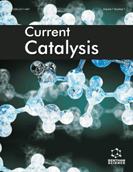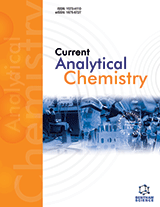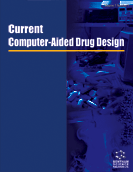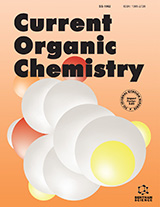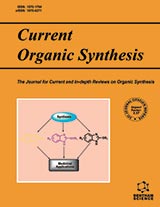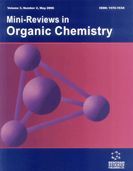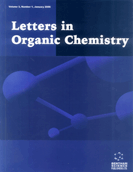Abstract
Background: Nitration of aromatic and hetero aromatic compounds has received enormous attention for the past several decades because many of these nitro products are used as chemical feed stocks and important intermediates for the synthesis of several lifesaving drugs, dyes, pharmaceuticals, perfumes, plastics and explosives. The classical nitration method demands the use of acid mixture (a potent mixture of concentrated nitric and sulfuric acids), which results in large amounts of inorganic acid waste pumped into the industrial drains. Such a large acid waste is not only hazardous but also causes environmental pollution and often leads to over nitration or by-products. Over the years, numerous useful methods have been developed for environmentally safe nitration. Poly ethylene glycol (PEG) and its derivatives have been extensively used as phase-transfer catalyst (PTC) in many commercial processes. Inspired by these procedures we report herein, a clean, economically cheap and, easy to operate, and efficient protocol for the nitration of aromatic compounds, using laboratory desktop chemicals such as nanocrystalline manganese (II) carbonate and polyethylene glycols (PEG).
Materials and Methods: Chemicals were purchased from Merck, Sigma-Aldrich. Nitration reactions were conducted under sonication and microwave irradiation in addition to the conventional method of organic synthesis. The progress of the reaction was monitored by Thin Layer Chromatography on commercial precoated TLC plates. Melting points were determined by using open capillary tubes with a Buchi 510 apparatus and corrected. UV spectra were recorded on a Shimadzu UV-2700 model UV-VIS Spectrophotometer.
Conclusion: In conclusion, a regioselective nitration of a various aromatic compounds using green, available, inexpensive and easy to handle catalyst PEG/Mn (II) has been reported. The scope and generality of this protocol was illustrated with several aromatic compounds, short reaction times with good to excellent yields. Non-conventional methods such as sonochemical and microwave affords the nitration of aromatic compounds of both ring activated and deactivated compounds.
Keywords: Nitration, PEG assisted Mn(II), rate accelerations, sonication, microwave irradiation, nitroarenes.
Graphical Abstract
Current Catalysis
Title:PEG Assisted Manganese (II) Carbonate as an Efficient Catalyst for Regioselective Nitration of Aromatic Compounds Under Acid Free Conventional and Non-Conventional Conditions Using NaNO2
Volume: 5
Author(s): Ganga Krishnaiah, Kamatala Chinna Rajanna, Pasnoori Srinivas and Voruvala Sudhakar Chary
Affiliation:
Keywords: Nitration, PEG assisted Mn(II), rate accelerations, sonication, microwave irradiation, nitroarenes.
Abstract: Background: Nitration of aromatic and hetero aromatic compounds has received enormous attention for the past several decades because many of these nitro products are used as chemical feed stocks and important intermediates for the synthesis of several lifesaving drugs, dyes, pharmaceuticals, perfumes, plastics and explosives. The classical nitration method demands the use of acid mixture (a potent mixture of concentrated nitric and sulfuric acids), which results in large amounts of inorganic acid waste pumped into the industrial drains. Such a large acid waste is not only hazardous but also causes environmental pollution and often leads to over nitration or by-products. Over the years, numerous useful methods have been developed for environmentally safe nitration. Poly ethylene glycol (PEG) and its derivatives have been extensively used as phase-transfer catalyst (PTC) in many commercial processes. Inspired by these procedures we report herein, a clean, economically cheap and, easy to operate, and efficient protocol for the nitration of aromatic compounds, using laboratory desktop chemicals such as nanocrystalline manganese (II) carbonate and polyethylene glycols (PEG).
Materials and Methods: Chemicals were purchased from Merck, Sigma-Aldrich. Nitration reactions were conducted under sonication and microwave irradiation in addition to the conventional method of organic synthesis. The progress of the reaction was monitored by Thin Layer Chromatography on commercial precoated TLC plates. Melting points were determined by using open capillary tubes with a Buchi 510 apparatus and corrected. UV spectra were recorded on a Shimadzu UV-2700 model UV-VIS Spectrophotometer.
Conclusion: In conclusion, a regioselective nitration of a various aromatic compounds using green, available, inexpensive and easy to handle catalyst PEG/Mn (II) has been reported. The scope and generality of this protocol was illustrated with several aromatic compounds, short reaction times with good to excellent yields. Non-conventional methods such as sonochemical and microwave affords the nitration of aromatic compounds of both ring activated and deactivated compounds.
Export Options
About this article
Cite this article as:
Krishnaiah Ganga, Chinna Rajanna Kamatala, Srinivas Pasnoori and Sudhakar Chary Voruvala, PEG Assisted Manganese (II) Carbonate as an Efficient Catalyst for Regioselective Nitration of Aromatic Compounds Under Acid Free Conventional and Non-Conventional Conditions Using NaNO2, Current Catalysis 2016; 5 (1) . https://dx.doi.org/10.2174/2211544705666151222183625
| DOI https://dx.doi.org/10.2174/2211544705666151222183625 |
Print ISSN 2211-5447 |
| Publisher Name Bentham Science Publisher |
Online ISSN 2211-5455 |
 48
48 1
1 1
1
- Author Guidelines
- Bentham Author Support Services (BASS)
- Graphical Abstracts
- Fabricating and Stating False Information
- Research Misconduct
- Post Publication Discussions and Corrections
- Publishing Ethics and Rectitude
- Increase Visibility of Your Article
- Archiving Policies
- Peer Review Workflow
- Order Your Article Before Print
- Promote Your Article
- Manuscript Transfer Facility
- Editorial Policies
- Allegations from Whistleblowers
- Announcements


